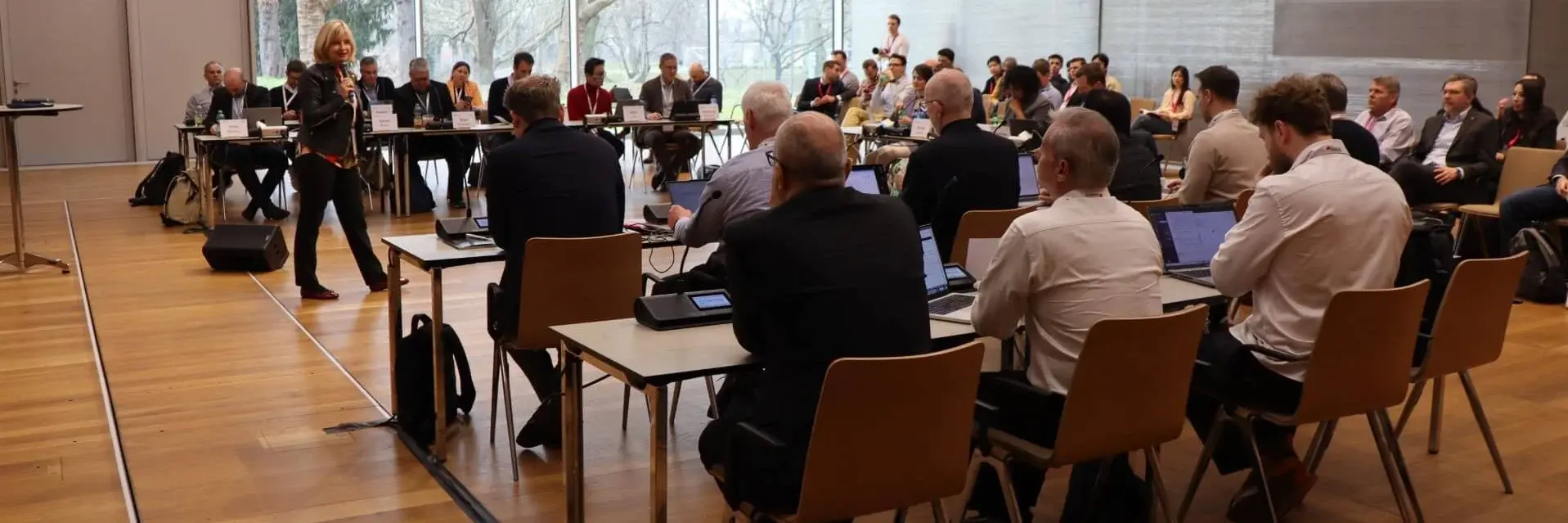The French and German business schools HEC Paris and ESMT Berlin have joined forces to advance innovative computer technologies such as quantum computing. As part of the nine-month Creative Destruction Lab (CDL) program, which is aimed at early-stage technology-oriented start-ups working in innovative fields, the international business universities held the first joint ‘Next Generation Computing Stream Session’ at the TUM Campus Heilbronn. The two-day event was organized in cooperation with the Dieter Schwarz Foundation, the TUM Campus Heilbronn and the Campus Founders.
Copy and Paste
The event kicked off on Wednesday evening with a panel discussion at the Campus Founders premises. The TUM Campus Heilbronn was on hand as a partner and host. The moderator was Professor Ali Sunyaev, Vice President of the Campus. “Only by working together can we be successful in the long term,” said the professor, and then gets straight into the discussion: “The best way to get started is to go deep into the topic of quantum.” Professor Achim Kempf from the University of Waterloo kicked off the discussion: “The limit of classical data processing is the speed of light. When it comes to big problems, quantum computing can be astronomically faster.” The breakthrough of this technology: “It is now possible to copy the code, encrypt the information and use it for different tasks.” Until now, there was no ‘copy and paste’ in this area.
Dr Michael Bolle, Chairman of the Board of the Carl Zeiss Foundation, expressed concerns. For commercial success, concrete applications are needed, otherwise enthusiasm for the ‘holy grail’ of quantum will quickly wane again. Laura Schulz, Head of Quantum Computing and Technologies at the Leibniz Supercomputing Center, also shares this view. Philipp Gerbert, CEO of TUM Venture Labs Munich, highlighted the opportunities, because of the eleven labs that TUM unites, the ‘Quantum Semicon’ area is receiving the most funding and there is an explosion of ideas. One example of success is Plan QC GmbH, which is already successfully developing quantum computers. Managing Director Dr Sebastian Blatt looks back: After participating in the CDL in 2021, the company has established itself in the market.
Goals and Challenges
This was also the goal of the start-ups from across Europe, who were advised by experienced mentors on the second day. On the one hand, in defining goals, and on the other hand, in possible challenges along the way. Students from the TUM Campus Heilbronn also benefited from the lively discussions. Ying Chen, a Master's student in Management & Technology, is pleased: “I am planning my own start-up and am glad to benefit from the insights of experienced mentors.” TUM student Mateusz Kalinka is looking for supporters: “We have founded a Deep Tech Club for students here on campus, and maybe we will also find mentors for this project at the CDL.”
At the end of the two inspiring days, Vice President Ali Sunyaev draws a positive conclusion: “The organization of this session in Heilbronn underlines the growing importance of the Heilbronn-Franken region in the field of Deep Tech. TUM is pleased to contribute to this dynamic ecosystem and to promote forward-looking collaborations.” The positive influence of young talent should not be limited to the region: “I hope that our students go out and make the world a better place.”
